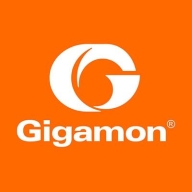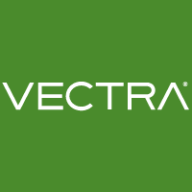

Vectra AI and Gigamon Deep Observability Pipeline compete in the network security category, each offering distinct advantages. Vectra AI has a strong edge in reducing alert noise and providing contextual threat information, while Gigamon excels in traffic analysis by centralizing packet filtering and encryption.
Features: Vectra AI effectively reduces alert fatigue by consolidating multiple alerts into a single incident, prioritizing imminent threats, and providing detailed incident context. It utilizes machine learning to automate threat detection, enhancing efficiency for security teams. Gigamon Deep Observability Pipeline enhances network performance by centralizing packet filtering, allowing for better traffic analysis and streamlined encryption processes, which simplifies troubleshooting.
Room for Improvement: Vectra AI’s update processes can initially cause alert spikes, and its integration with external components could be improved. It requires fine-tuning to minimize false positives. Gigamon could enhance its built-in visibility features to lessen reliance on external tools and further develop its security capabilities.
Ease of Deployment and Customer Service: Vectra AI is versatile, suitable for on-premises, cloud, and hybrid environments, with reliable customer support known for quick responses. Gigamon, primarily on-premises with hybrid options, also offers responsive technical support. Both face challenges scaling with growing customer demands.
Pricing and ROI: Vectra AI is priced on the higher side, influenced by IPs, logs, and deployment scale, yet users find value in its efficiency boosts and reduced threat response times. Gigamon is considered reasonably priced with fees linked to equipment needs, offering value in network efficiency and security monitoring. Both provide ROI through enhanced security operations and breach prevention.
The technical support by Gigamon Deep Observability Pipeline is good because it has a local architect in my area.
The support is quite reliable depending on the service engineer assigned.
When I create tickets, the response is fast, and issues are solved promptly.
ExtraHop's ability to decrypt encrypted data is a feature that Vectra AI lacks.
You need to have a Linux server, and from the Linux server, you must perform AI tasks, and there is a lot to be handled in the back end.
Neither Vectra nor Darktrace have a function like a status health check on my log sources and traffic sources.
Vectra is cheaper in terms of pricing and features compared to Darktrace.
It is very acceptable when you compare it with Darktrace, for example.
The Pipeline's Comprehensive Insights into data flows have helped improve operational efficiency and security.
The main feature of Vectra AI that I find valuable is its focus on the user interface and its approximately two hundred algorithms based on artificial intelligence and machine learning.
There are extensive out-of-box detection capabilities.


Gigamon Deep Observability Pipeline is a comprehensive network visibility solution that provides real-time insights into network traffic. It offers SSL inspection and mobile network monitoring for traffic monitoring purposes. The solution optimizes networks, aids in security inspection, and improves firewall performance. It is praised for its performance, power, straightforward integration, stability, and ease of initial setup.
With Gigamon, organizations can gain complete visibility into their network traffic, identify potential threats, and take proactive measures to prevent them. The solution is ideal for organizations of all sizes, including enterprises, service providers, and government agencies.
Vectra AI is used for detecting network anomalies and potential malicious activities, providing visibility into network traffic and enhancing threat detection across environments.
Organizations deploy Vectra AI mainly on-premises with additional cloud components. It helps with compliance, incident response, security monitoring, detecting insider threats, and correlating network events. Vectra AI captures and enriches network metadata, provides detailed dashboards, reduces false positives, and supports cross-environment behavioral analysis to enhance threat detection and prioritization. While valued for its high accuracy and alert aggregation, it has room for improvement in UI/UX, packet management, and integration with SIEMs and other tools. It is noted for expensive pricing and limited proactive threat response features.
What are Vectra AI's most valuable features?In specific industries, Vectra AI is deployed to monitor complex networks and alleviate challenges in threat detection. It is particularly effective in sectors requiring stringent compliance and security measures, offering insights and capabilities crucial for protecting sensitive data and maintaining operational integrity.
We monitor all Network Detection and Response (NDR) reviews to prevent fraudulent reviews and keep review quality high. We do not post reviews by company employees or direct competitors. We validate each review for authenticity via cross-reference with LinkedIn, and personal follow-up with the reviewer when necessary.